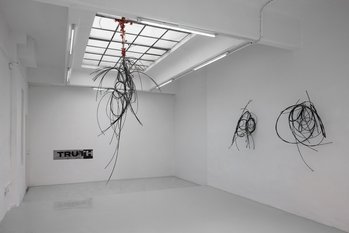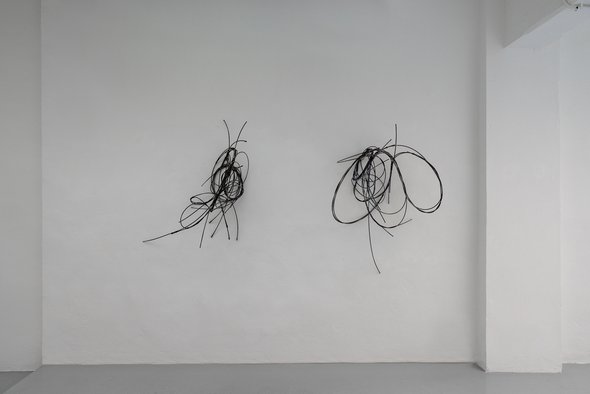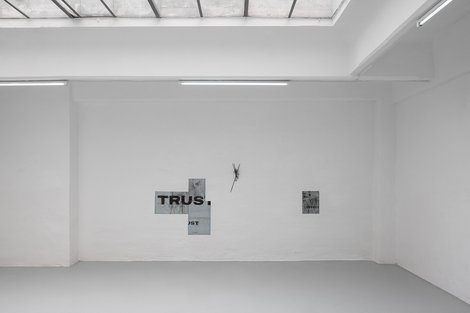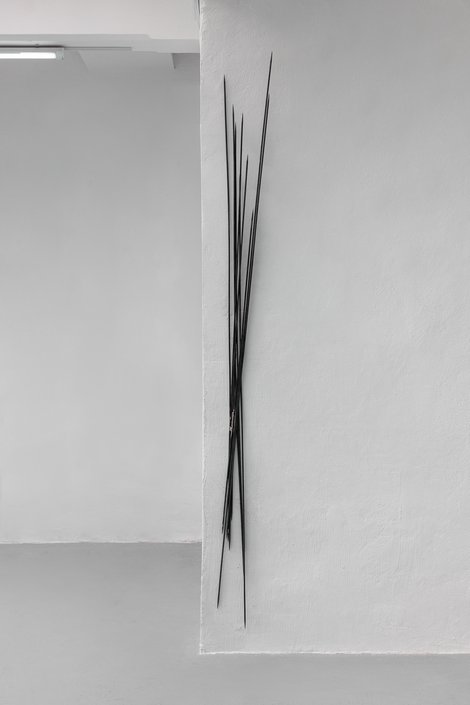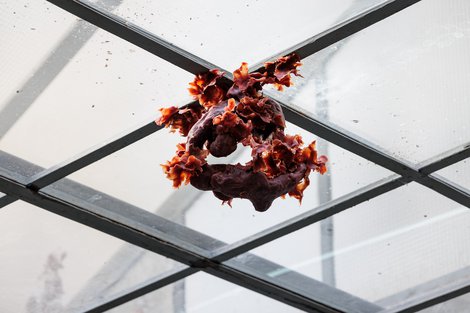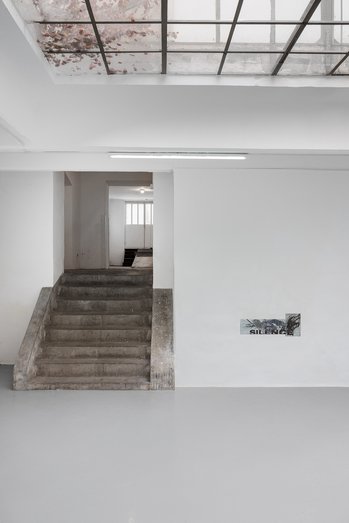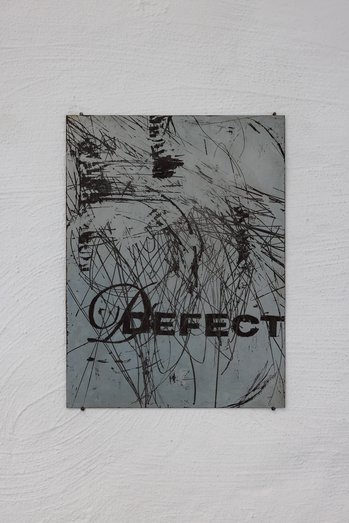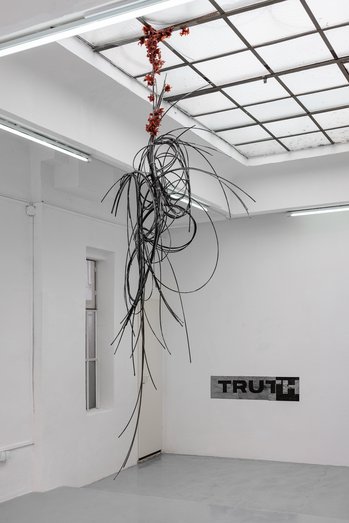Attention
Aurélien Potier
Aurélien Potier
“Fasting makes sense of the hunger. The constant internal grasping. The only sensible answer to this is to always withdraw the thing after which I grasp. To subvert. To thwart. To deny. It closes the loop. If I am hungry and I eat and I remain hungry, hunger becomes rage. But to deny fulfillment makes sense of the hunger – I don’t eat, so I am hungry.”
― Anne de Marcken, It Lasts Forever and Then It's Over
GIANNI MANHATTAN is pleased to present "Attention", Aurélien Potier’s first solo exhibition at the gallery.
Potier’s artistic vocabulary encompasses sculpture, writing, performance, sound and drawing. There is a terse duality in almost all of his work, both conceptually and materially. His artworks are simultaneously tender and violent, hard and soft, legible and illegible, malleable and rigid, and for his solo exhibition at the gallery Potier presents a series of new works that open up a space for reflection on the fragile conditions that define both individual life and the collective structures to which one necessarily belongs.
GIANNI MANHATTAN is pleased to present "Attention", Aurélien Potier’s first solo exhibition at the gallery.
Potier’s artistic vocabulary encompasses sculpture, writing, performance, sound and drawing. There is a terse duality in almost all of his work, both conceptually and materially. His artworks are simultaneously tender and violent, hard and soft, legible and illegible, malleable and rigid, and for his solo exhibition at the gallery Potier presents a series of new works that open up a space for reflection on the fragile conditions that define both individual life and the collective structures to which one necessarily belongs.
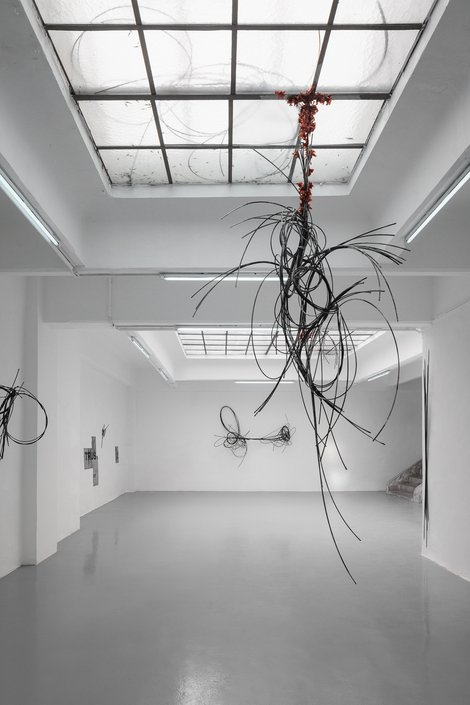
6.03.25—19.04.25
GIANNI MANHATTAN, Wassergasse 14, 1030 Vienna
> Installation views
“Fasting makes sense of the hunger. The constant internal grasping. The only sensible answer to this is to always withdraw the thing after which I grasp. To subvert. To thwart. To deny. It closes the loop. If I am hungry and I eat and I remain hungry, hunger becomes rage. But to deny fulfillment makes sense of the hunger – I don’t eat, so I am hungry.”
― Anne de Marcken, It Lasts Forever and Then It's Over
GIANNI MANHATTAN is pleased to present "Attention", Aurélien Potier’s first solo exhibition at the gallery.
Potier’s artistic vocabulary encompasses sculpture, writing, performance, sound and drawing. There is a terse duality in almost all of his work, both conceptually and materially. His artworks are simultaneously tender and violent, hard and soft, legible and illegible, malleable and rigid, and for his solo exhibition at the gallery Potier presents a series of new works that open up a space for reflection on the fragile conditions that define both individual life and the collective structures to which one necessarily belongs.
GIANNI MANHATTAN is pleased to present "Attention", Aurélien Potier’s first solo exhibition at the gallery.
Potier’s artistic vocabulary encompasses sculpture, writing, performance, sound and drawing. There is a terse duality in almost all of his work, both conceptually and materially. His artworks are simultaneously tender and violent, hard and soft, legible and illegible, malleable and rigid, and for his solo exhibition at the gallery Potier presents a series of new works that open up a space for reflection on the fragile conditions that define both individual life and the collective structures to which one necessarily belongs.
Dispersed throughout the exhibition space are zinc etching plates that have been engraved and eroded to give form to a list of words that function as a series of instructions, requests, headlines or advertising slogans. The bold font exposes the words and interrogates the multiple layers of their collective and intimate meaning. The plates, which hang at irregular heights throughout the gallery space, seem to annotate the corners of the architecture. This series of works address the cultural politics of emotions and considers the relationship between feelings, language and bodies and how they can become embedded in larger material and discursive societal structures.
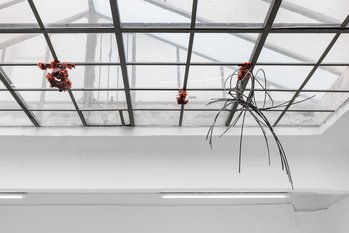
Aurélien Potier’s artistic practice demonstrates an enveloping vulnerability in a number of ways. Nestled amongst the skylights of the gallery are two sculptures made from modelling wax. Their brown and dark red surfaces become supple through touch with the transferral of body heat, hence the endangerment of these plant like and fungal forms is energy and intimacy. Although precarious, they have seemingly found safety in the highest point of the gallery, an area which receives the most amount of daylight and where the waxy organisms are closest to the outside world.
Suspended from the ceiling and hooked onto the walls are tangled sculptures made from industrial metal cables. Damaged, fragmented and bound, the cables, which are typically employed for their robustness and resistance, now evoke a sense of instability. These writhing, knotted and interlocking forms lend themselves to a psychoanalytical reading: a site where desire and the death drive collide. Under the altered and muted light of the gallery space a tension between the industrial quality of the wire and the natural forms they embody hangs in the air. In this charged environment, Potier’s works do not seek resolution but rather expose the visceral contradictions that shape existence. His works trace the edges of what is felt but not always seen, where forms twist and tangle, where desire and exhaustion meet, where what is cast aside returns to press against shared affects—insisting, persisting and making space for another way of feeling and belonging.
Suspended from the ceiling and hooked onto the walls are tangled sculptures made from industrial metal cables. Damaged, fragmented and bound, the cables, which are typically employed for their robustness and resistance, now evoke a sense of instability. These writhing, knotted and interlocking forms lend themselves to a psychoanalytical reading: a site where desire and the death drive collide. Under the altered and muted light of the gallery space a tension between the industrial quality of the wire and the natural forms they embody hangs in the air. In this charged environment, Potier’s works do not seek resolution but rather expose the visceral contradictions that shape existence. His works trace the edges of what is felt but not always seen, where forms twist and tangle, where desire and exhaustion meet, where what is cast aside returns to press against shared affects—insisting, persisting and making space for another way of feeling and belonging.
